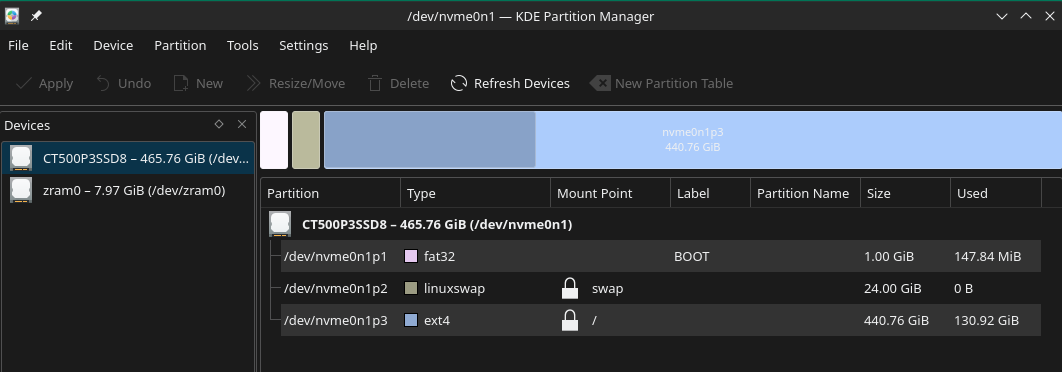I know what ZRAM does, but not a lot of details about how it works. I'm wondering whether its size, as reported in a partition manager, is its actual size on the disk, and how that relates to the amount of uncompressed data it can hold. To illustrate my question, here's an image of my laptop disk:

When I last installed KDE Plasma on this device, the installer created a ZRAM partition of approxiimately 8 GiB capacity. Does that mean that it occupies 8 GB on the SSD, or that it can only hold 8 GB of data after compressing it?
What this question is leading up to: I'm trying to figure out whether my current swap partition is redundant, with regard to allowing this system to hibernate. (The SSD in this laptop is 500 GB, which is excessive for my needs, but that's what was in it when I bought it.) The amount of RAM in this machine is 16 GB.
So, normally a 16 GB swap partition would be plenty big enough to allow the machine to hibernate, but in the extremely unlikely case that some of that swap space might already be in use at the time it was told to hibernate, and having far more room on that SSD that I'd ever need anyway, I asssigned the swap partition 24 GiB.
So, back to the question of compression for the ZDISK. Let's say that I had a whole lot of applications open, and my 16 GB of RAM was mostly in use, would the machine be able to hibernate with just that 8 GB of ZRAM available? Or would the laptop simply refuse to hibernate, as is the case with a too-small swap partition?
And a related question: What determined that the ZRAM partition in this machine would be 8 GB in size when I installed Solus? Is that a constant for every installation? Is it based on 1/2 the size of RAM in the machine? If it's configurable at install time, could the installer simply set it to the size of RAM in the system at install time?
If that last answer is true, then all machines could be able to hibernate without needing a separate swap partition to be created that's large enough to hold the contents of RAM. Just wondering.
(The advantages of a device's being able to hibernate are many, but I won't talk about them here. I've already done that in a different thread. This question is just about the relation of ZRAM capacity to its size on disk.)